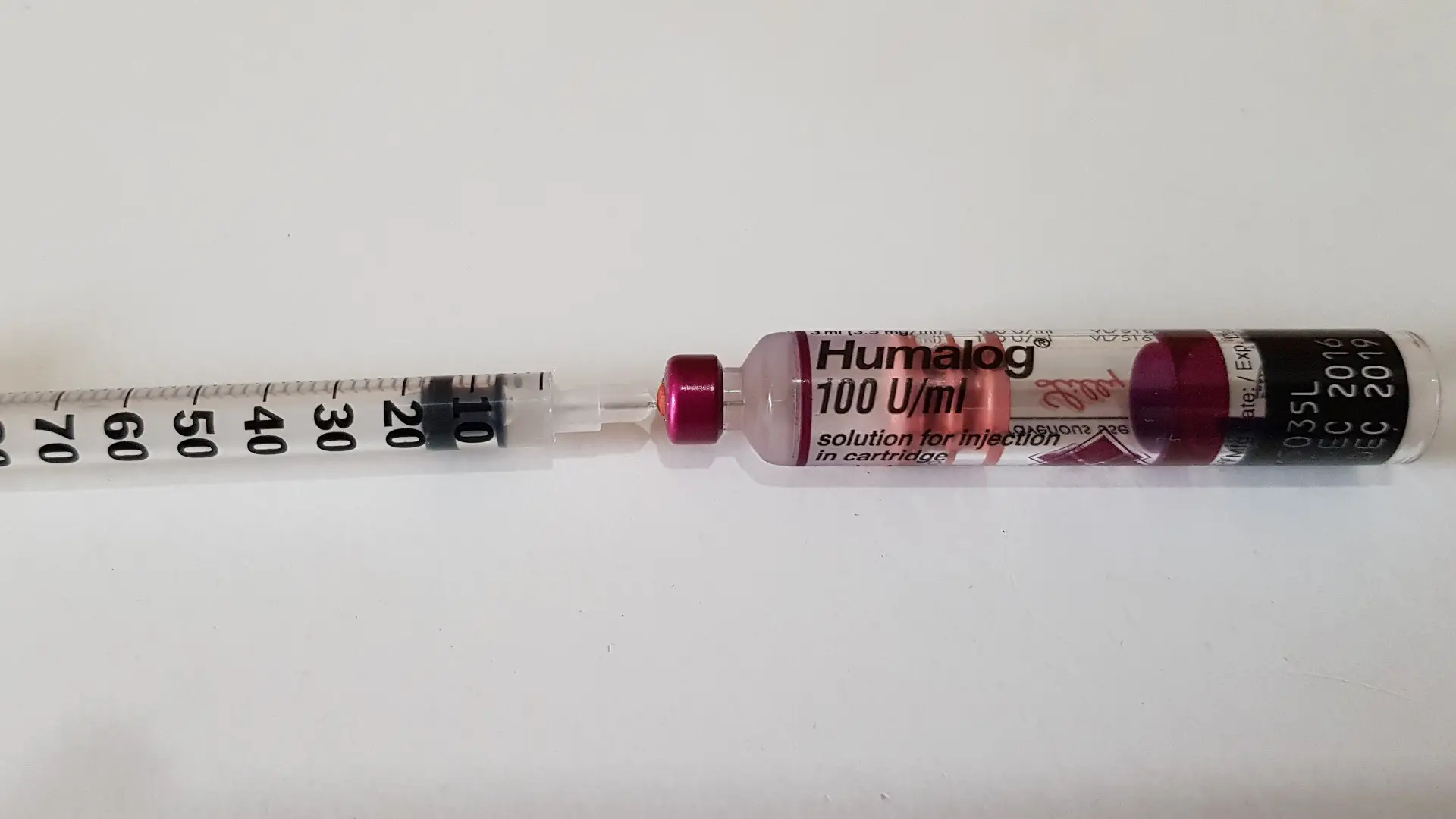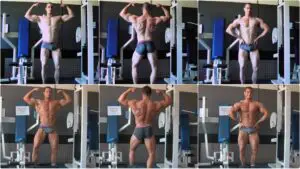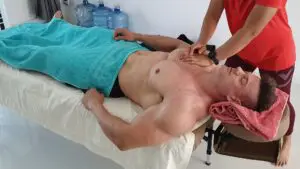Essential Health Monitoring Devices
In this article, we’ll discuss a few MUST HAVE Electronic Devices that every bodybuilder, strength athlete, or fitness enthusiast should have at home to monitor their health, whether on or off cycle. We can keep track of our health using these devices daily, as its financially impossible to go to do blood work every week to see the minor fluctuations in health markers. Some of the testing equipment that the hospitals or clinics use has been standardized and is available in small & portable devices that can be bought online or at your local pharmacy for a small investment. We’ll discuss the most essential devices in this article, how to use them and where you can buy them online!
With regards to improving certain aspects of your health, when one of the discussed devices indicates there’s a problem, make sure you address the potential cause of the problem before resorting to supplements or medications. If you aren’t able to solve the problem this way or need to continue to use specific Performance Enhancing Drugs (PEDs) because your livelihood depends on it. Then you can use specific Over-The-Counter (OTC) supplements to improve particular health markers with this article: Coach Steve’s Year-Round Supplement Stack
Body Weight Scale
A bodyweight scale is the most straightforward device any bodybuilder, strength athlete, or fitness enthusiast can use to track their progress. You step on the scale, and it’ll give you your body weight in Kilograms (Kg) or Pounds (lbs). The easiest way to track fluctuations in your body weight is by writing your weight on the Calendar!
There are several digital body weight scales available that send your weight to an app on your phone by BlueTooth or Wi-Fi. Allowing for a digital readout, in which you can track the trend of your body weight changes with a timeline graph. Higher-end models can also calculate your Body Mass Index (BMI) & Body Fat Percentage.
The most popular multi-functional body weight scale is the Renpho Digital Weight Scale, it can be bought online on most retail websites, including Amazon, E-bay, Ladaza, AliExpress & Shopee.
Renpho Digital Weight Scale on Amazon: https://amzn.to/37p5O2E
Wrist Blood Pressure Monitor
A Sphygmomanometer or blood pressure meter/monitor is a device used to measure Systolic & Diastolic blood pressure; most models measure heart rate as well. Blood pressure monitors are composed of an inflatable cuff, which collapses and then releases the artery within the cuff in a controlled manner. Manual Sphygmomanometers use Mercury or use a mechanical Manometer to measure the pressure changes. Digital meters employ Oscillometric measurements and electronic calculations rather than auscultation.
Measurements with both manual & mechanical Sphygmomanometers are always in conjunction with a means to determine at what pressure blood flow is just starting and at what pressure it is unimpeded. This determines the readings of Systolic & Diastolic blood pressure.
Bodybuilders, strength athletes, or fitness enthusiasts will have difficulty getting an accurate reading using a blood pressure monitor that uses an arm cuff. Blood pressure monitors aren’t calibrated for muscular arms over 46cm / 18inch. Muscular people should use a blood pressure monitor that uses a wrist cuff, which either slides over your hand or secures tightly with velcro.
Take your readings while sitting down for at least 5 minutes to let your heart rate & blood pressure return to baseline. Also, make sure you leave a 1-2cm / 0.5-1inch space between the wrist cuff and your hand for an accurate reading. Most blood pressure monitors start working after you turn them on and will display your heart rate and Systolic & Diastolic blood pressure within 2-3 minutes of use.
Below are the ranges for different blood pressure categories determined by the American Heart Association:
• Normal: Systolic below 120mmHg & Diastolic below 80mmHg
• Elevated: Systolic 120-129mmHg & Diastolic below 80mmHg
• High Blood Pressure (Stage 1): Systolic 130-139mmHg & Diastolic 80-89mmHg
• High Blood Pressure (Stage 2): Systolic over 140mmHg & Diastolic over 90mmHg
• Hypertensive Crisis: Systolic over 180mmHg & Diastolic over 120mmHg
NOTE: In cases of Hypertensive Crisis, the person requires immediate medical attention!
Blood pressure management encompasses many aspects of bodybuilding, strength sports, or general fitness, especially concerning PED usage. The most popular wrist blood pressure monitor is the Omron 7 Series, it can be bought online on most retail websites including; Amazon, E-bay, Ladaza, AliExpress & Shopee.
Omron 7 Series on Amazon: https://amzn.to/3udI3n7
Blood Glucose Level Monitor (Glucometer)
A glucometer is a medical device for determining the approximate concentration of glucose in the blood. This device is commonly used by people who suffer from Type 1 or 2 Diabetes to assess their blood glucose levels. Glucometers are readily used by advanced bodybuilders, strength athletes & fitness enthusiasts to see if they’re losing Insulin sensitivity during the offseason. Either due to high carbohydrate intake, continuous GH use, or by using Growth Hormone Secretagogues like MK-677 or GHRP-6. Daily use of a Glucometer is essential when using fast-acting or long-acting Insulin to assess accurate Insulin dosing.
Below are very general guidelines of when you should take blood glucose readings while using specific forms of Insulin:
• Fast-Acting Insulins: after fasted cardio, 2 hours after meals, post-workout
• Long-Acting Insulins: upon waking, 2 hours after meals, post-workout, before bed
A glucometer requires a small drop of blood obtained by pricking the skin with a lancet provided with the glucometer kit. Place the sample of blood on a disposable test strip that the meter reads and uses to calculate your blood glucose level. The glucometer displays the level in units of mg/dl or mmol/l.
Below are the ranges for blood glucose ranges, which are considered to be healthy:
• Fasting Blood Glucose Level upon Waking: 70-100 mg/dL or 3.9-5.5 mmol/L
• Blood Glucose Level 2 hours after Meals: 90–130 mg/dL or 5.0–7.2 mmol/L
NOTE 1: Fasting hyperglycemia is diagnosed as a blood glucose level higher than 130 mg/dl or 7.2 mmol/l after fasting (from calories, not water) for at least 8 hours.
NOTE 2: Postprandial hyperglycemia is diagnosed as a blood glucose level higher than 180 mg/dl or 9.9 mmol/l, 2 hours after eating a meal containing carbohydrates. Healthy individuals without Diabetes rarely have blood glucose levels over 140 mg/dl after consuming a meal, unless the meal contained a large amount of processed carbohydrates (cereal, popcorn, ice-cream, cake, etc.)
NOTE 3: Fasting & postprandial hypoglycemia is diagnosed as a blood glucose level lower than 70 mg/dl or 3.9 mmol/l after fasting (from calories, not water) for at least 8 hours as well as in between meals.
Frequent or ongoing high blood glucose levels can cause damage to the nerves, blood vessels & organs, as well as lead to other severe medical conditions when left untreated. People who develop Type 1 Diabetes are prone to the build-up of ketones in the blood called Keto-Acidosis.
When you notice that your blood glucose levels rise towards the top of the reference range or see readings above the reference range, then it’s time to make some adjustments to your food intake & PED Protocol. Allowing blood glucose levels to return within the reference range again.
Combination glucose & ketone meters are also available on most retail websites. A popular combo meter is the KETO-MOJO, it can be bought online on most retail websites including; Amazon & E-bay.
KETO-MOJO GK+ Bluetooth Glucose & Ketone Testing Kit: https://amzn.to/3NLsJG5 KETO-MOJO GK+ 60x Blood Glucose + 60x Blood Ketone Testing Strips Combo Pack: https://amzn.to/3LK3ylf
Blood Ketone Level Monitor / Ketone Breath Tester
Ketones (Beta-Hydroxybutyric Acid) or Ketone Bodies are produced in the Liver when Liver glycogen stores and blood glucose levels are low. Low glycemic states allow the Brain to switch from glucose to ketones for energy. Ketones are measured in the blood as well as urine. Before blood & breath testing equipment became available, urine ketone measuring strips were used to indicate if the person was in ketosis or not. Nowadays you’re able to check the ketone concentration in the blood more accurately using specialized electronic devices.
Ketone monitors were developed to check for Diabetic Keto-Acidosis (DKA) in people who have Type 1 Diabetes. Similar to glucose, we want ketones in metabolically active tissue, not as large as concentrations in the blood. Bodybuilders, strength athletes, or fitness enthusiasts can use these ketone devices to check their level of ketosis. Measuring both serum glucose & ketone levels allows you to assess the effectiveness of a ketogenic diet. Ketone monitors are also used to assess how long it takes to get back into ketosis after a refeed with carbohydrates or cheat meal.
Nutritional ketosis begins at serum ketone concentration levels of 0.5 mmol/L, while blood glucose levels are between 65-80mg/dL or 3.6-4.4mmol/L. Nutritional ketosis occurs naturally upon waking before consuming breakfast, as you deplete Liver glycogen & blood glucose levels overnight while in a calorie deficit. Eating a meal with carbohydrates will bring you out of ketosis and switch the energy consumption of the Brain back to glucose.
Individuals who follow a ketogenic diet, restrict carbohydrates to 50-70g per day, and only have direct carb sources post-workout will see their blood ketone levels rise between 1.0-4.5mmol/l depending on the time of day. The protein & fat content of the meals consumed prior determines the number of ketone bodies in the blood. Fat burners are also able to increase ketone bodies.
Fasting for several days can increase blood ketone levels well above 5mmol/L even close to the 6.5-7.5mmol/L range. Blood ketone levels above 8mmol/L are usually only seen in people with Type 1 Diabetes. Who produce too many ketone bodies to compensate for the inability of glucose to reach metabolically active tissue. Symptoms of very high blood ketone levels or Keto-Acidosis (above 8.0mml/L) include; excessive thirst, increased urination, fruity or acidic smell of the breath or bodily fluids as well as cottonmouth.
Combination glucose & ketone meters are also available on most retail websites. A popular combo meter is the KETO-MOJO, it can be bought online on most retail websites including; Amazon & E-bay.
KETO-MOJO GK+ Bluetooth Glucose & Ketone Testing Kit: https://amzn.to/3NLsJG5 KETO-MOJO GK+ 60x Blood Glucose + 60x Blood Ketone Testing Strips Combo Pack: https://amzn.to/3LK3ylf
Ketone breath testers are reasonably new technology based on Breathalyzers used by Police Officers to measure alcohol concentrations in the blood. Coach Steve hasn’t had a chance to use a ketone breath tester himself. Several of his clients who follow a ketogenic diet use a ketone breath tester, and they appear to be as accurate as most ketone blood monitors. The most popular ketone breath tester is the Ketoscan Mini Breath Ketone Meter, which can be bought online on Amazon.
V2 Ketoscan Mini on Amazon: https://amzn.to/36QOB29
Body Temperature Monitor
To accurately assess your thyroid conversion and metabolic rate, you can check your Basal Body Temperature (BBT) upon waking every day during a contest prep or cutting phase. Ideally, you get adequate Iodine, Selenium, and Vitamin K1, K2 MK4 & K2 MK7 from your diet, or use a weekly refeed to stimulate thyroid conversion. Clenbuterol or Ephedrine, Growth Hormone & Thyroxine (T4), or Triiodothyronine (T3) also help to keep the metabolism elevated continuously.
At one point during a cutting phase or contest prep, you’ll notice that your BBT goes down to around 36 Celsius / 96.8 Fahrenheit upon waking, which indicates reduced thyroid output. Even if you’re consuming adequate micro-nutrients in the diet while using PEDs (besides T3) to keep thyroid conversion functioning normally. Caloric restriction for months on end eventually downregulates your metabolism, reducing energy requirement by lowering thyroid conversion.
Below are several states of the metabolism, based on Basal Body Temperature (BBT) readings upon waking:
• 36.5 Celsius / 98 Fahrenheit or below: low BBT; indicates reduced thyroid output & lowered metabolism. If micro-nutrient intake is sufficient while using specific PEDs to increase metabolic rate, then the last option is to introduce T3 at 25mcg per day as a replacement dose for sufficient serum T3 levels.
• 37 Celsius / 98.5 Fahrenheit: normal BBT; no indication of reduced metabolism or illness.
• 37-37.5 Celsius / 98.5-99.5 Fahrenheit: high normal BBT; at that point, metabolism is high enough to taper T3 out of the PED Protocol. Thyroid-Stimulating Hormone (TSH) should restart thyroid conversion within a few days of complete T3 discontinuation.
• 38 Celsius / 100 Fahrenheit or above: indicates fever; body temperature elevates to fight off infection.
The most popular Ear Thermometer is the Thermoscan 7 by Brain, it’s a Thermometer designed for toddlers but is just as useful for adults. It can be bought online on most retail websites including; Amazon, E-bay, Ladaza, AliExpress & Shopee. Although there are many cheaper alternative Ear Thermometers available online. Honestly, any device with a 4.5 Star Rating with over 100 Reviews will do the job.
Thermoscan 7 on Amazon: https://amzn.to/3KfvWeP
Massage Guns
While massage guns seem to have grown in popularity over the years, they don’t come close to qualified Deep Tissue Massage (DTM) or Active Release Therapy (ART) Therapists. However, they can be beneficial to help break up scar tissue & adhesions and improve blood flow to the tissue. The massage guns can usually be adjusted by changing the oscillation & massage depth and come with several different attachments that can be exchanged to suit different purposes.
Coach Steve would like to emphasize that a qualified Therapist is essential for advanced or competitive bodybuilders, strength athletes, or fitness enthusiasts. Building a good relationship with your Therapists allows them to learn about your body and work through the scar tissue & adhesions that you’ve collected. A massage gun isn’t going to give you the attention you need in troublesome areas, they are basically a bandaid, nothing more!
The most popular massage guns are the Hypervolt Plus by Hyperice and the G3PRO by Theragun. The following retail websites sell the Hypervolt Plus & G3PRO; Ladaza, E-bay or Shopee. It’s a bit more challenging to buy them online as Amazon has their own line of 3rd-Party massage guns, which are much cheaper but not as powerful while making significantly more noise compared to the more popular massage guns.
Hypervolt Plus: https://hyperice.com/hypervolt
G3PRO: https://www.theragun.com/us/en-us/g3pro-us.html








